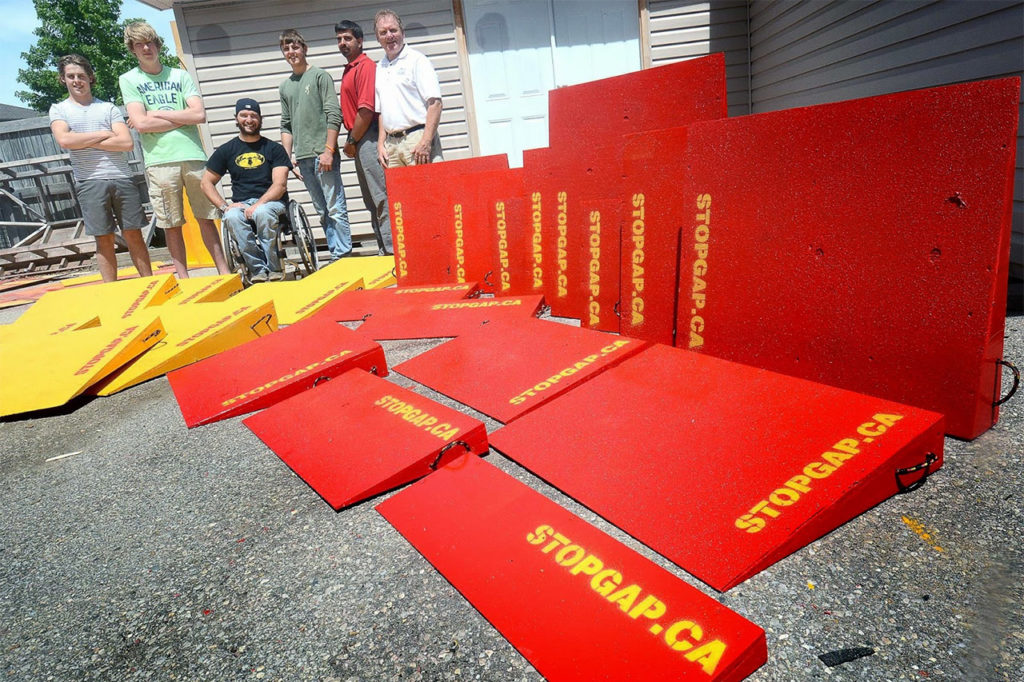Stopgap portable ramps
The people behind the stopgap portable ramps program (namely co-founder Luke Anderson) put into action the saying “be the change you want to see”. We could all learn a thing or two from this group. They have created an innovative, brightly coloured portable ramp product. In the process, they also bring visibility to an important issue.
I can’t count the number of times I go to an establishment and am met with the one step problem and can’t enter. One step might as well be thirty-five. My scooter can’t climb a single stair and it is very heavy to lift. A large step is also difficult for people who use walkers, canes and of course wheelchairs. Most older buildings have at least one step and usually, more at their entrance.
In Ontario, we have a government process meant to increase accessibility known as the AODA (Accessibility for Ontarians with Disabilities Act). The problem is, this act is not well enforced. The time it is taking to make ON accessible is moving slower than most “living turtles”.
What can people do when they encounter inaccessibility?
When citizens do encounter inaccessible hardship the option to sue under the human rights (for discrimination) code does exist. However, that process takes a lot of time, is super stressful, is very costly to the government, and it does not guarantee success.
Complaining is easy but rolling up your sleeves and actually doing something positive is so much better!
Way to go stopgap!
The city (namely Toronto) is concerned about being sued if someone should trip/fall because of the portable obstruction. Stores and businesses are pleased about placing a ramp at the door but they know interior arrangements need attention too. These portable ramps do not solve the problem entirely, but they most certainly offer an affordable 1st step.
Who knew a Pandora’s box could be so darn colorful?
Stopgap portable ramps make a great statement, like a sticky note, they remind you that something needs your attention.
Here is an interesting article worth reading:











